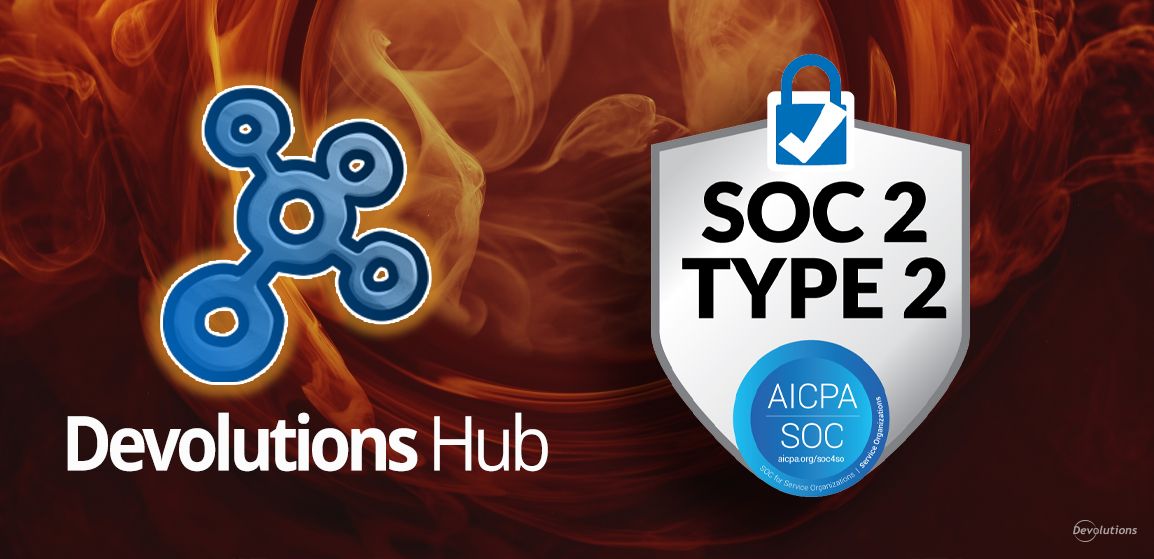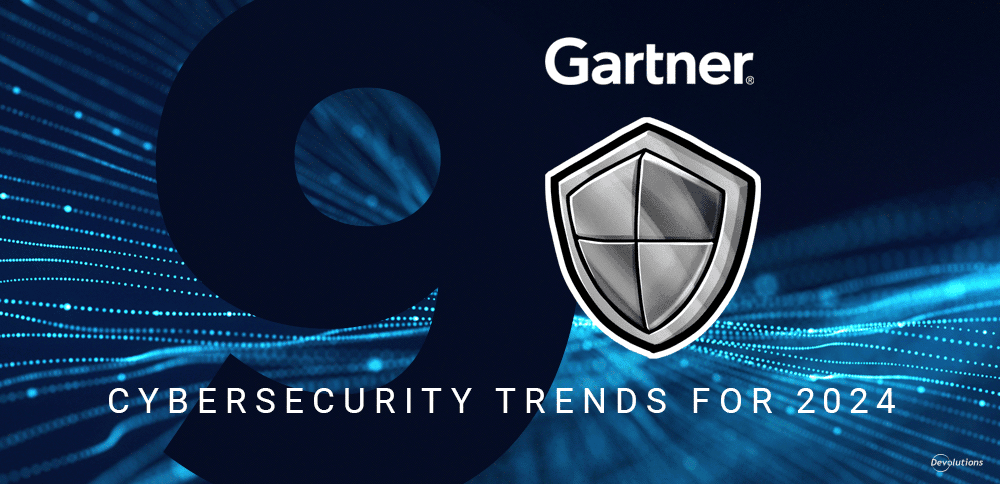Gartner has revealed its Top 10 Strategic Technology Trends for 2024. The trends have been organized into three categories (with some trends slotting across multiple categories):
- Protect Your Investment: Ensuring sustained impact from AI technology spending.
- Rise of the Builders: Unleashing the creative powers of the many communities that build AI applications and solutions.
- Deliver the Value: Refining and developing ways to improve experience for stakeholders, while expanding options for driving revenue
Below, we look closer at each trend to understand why it’s a priority, and highlight some practical steps for moving forward. We also identify the applicable category (or multiple categories) for each trend.
Trend #1: AI Trust, Risk and Security Management (AI TRiSM)
Category: Protect Your Investment
About: AI TRiSM plays a critical role in filling gaps in owner/builder systems related to governance, trustworthiness, fairness, reliability, robustness, transparency, and data protection (including adversarial resistance and app security).
Businesses that leverage AI TRiSM push more of their AI products into production, generate more business value and ROI, and achieve greater model precision and consistency compared to businesses that fall short in this crucial area.
By 2026, Gartner predicts that businesses that effectively apply TRiSM controls will eliminate 80% of faulty and illegitimate information from their models. The importance of this advantage should not be underestimated, as fears and criticisms are mounting about the existence of bias and lack of fairness in some high-profile AI models, such as those used for recruiting and law enforcement. Indeed, for our May 2023 poll question we asked the community about their top concerns about AI, and worries related to flawed and fake information topped the list.
Getting started: Gartner advises businesses to map their AI TRiSM vision and strategy to three core activities:
- Establish a dedicated team or task force to manage and govern all AI TRiSM efforts.
- Leverage best-of-breed toolsets as part of an organization-wide AI TRiSM program.
- Clearly define acceptable use policies; and establish a system to record and approve access to AI models and verify actual use.
Trend #2: Continuous Threat Exposure Management (CTEM)
Category: Protect Your Investment
About: CTEM is a systematic and practical approach designed to continually adjust cybersecurity optimization priorities. It actively reveals and prioritizes whatever threatens a business the most — including both patchable vulnerabilities and un-patchable exposures.
CTEM is less a strategy than it is a framework, which typically covers five core stages:
- Scoping the problem and creating a plan.
- Discovering and organizing the data needed to carry out the plan.
- Prioritizing issues and challenges (this can be done through statistical analysis, generating input from InfoSec specialists, etc.).
- Validating how attacks might happen, and how current systems will likely react to threats.
- Mobilizing people and processes in order to reduce obstacles to approvals, implementation processes, and mitigation deployments.
By 2026, Gartner says that businesses prioritizing security efforts and investments based on their robust CTEP framework will reduce breach incidents by two-thirds.
Getting started: Gartner advises businesses to focus their CTEM approach in three areas:
- Integrate CTEM with risk awareness and management programs to connect exposure mitigation priorities with business value priorities.
- Leverage ongoing and sometimes smaller operational wins to garner support and momentum for expanding an organization-wide vulnerability management program.
- Embrace cybersecurity validation technologies to boost prioritization workflows and enhance cybersecurity readiness.
Trend #3: Sustainable Technology
Category: Protect Your Investment; Rise of the Builders; Deliver the Value
About: Sustainable technology refers to a framework of integrated digital solutions, which drive environmental, social, and corporate governance (ESG) outcomes, as well as human rights, well-being, and prosperity.
It is important to appreciate that focusing on sustainable technology is not just an ethical consideration — it is also a business priority. Investments in sustainable technology can facilitate profitable new business models, and research by PwC has found 83% of consumers feel that businesses should follow ESG best practices. What’s more, Gartner predicts that by 2027, 25% of CIOs will see their personal compensation linked to their organization’s sustainable technology impact.
Getting started: To demonstrate that sustainable technology is (or will soon become) a top strategic priority, Gartner advises businesses to focus on three areas:
- Choose technologies (e.g., cloud services, AI, etc.), that are deemed as a priority by all key decision-makers and stakeholders.
- Ensure that the ethics board is actively involved in developing the sustainable technology roadmap.
- Emphasize improving value optimization over improved organizational sustainability.
Before moving on, we should highlight that this last piece of advice from Gartner — pushing value optimization over stronger organizational stability — may at first glance seem counter-productive. However, a deeper look reveals that they are complimentary and synergistic. Businesses that focus on ways to optimize sustainability in core areas such as internal IT, enterprise, and customer operations will automatically strengthen overall organizational sustainability. What’s more, this is not an “either/or” proposition. Businesses can and should do both (optimize and improve). It is just a matter of emphasis, with the former being more functional and practical as a starting point for most businesses.
Trend #4: Platform Engineering
Category: Rise of the Builders
About: Platform engineering focuses on increasing productivity through self-service capabilities augmented with automated infrastructure operations. If designed and deployed correctly, platform engineering not only optimizes developer experience, but also augments the capacity of the product team to deliver customer value. In short: it promises to bring much-needed, long-overdue cohesion and cooperation between software engineers and operators.
By 2026, Gartner predicts that 8 in 10 large software engineering organizations will have platform engineering teams in place. These teams will function as internal providers of reusable services, components, and tools for application delivery.
For those who are new to the world of platform engineering, check out this excellent YouTube video that unpacks the core concepts, definitions, frameworks, and strategies. At nearly 45 minutes it is rather long, but well worth the time considering how important this topic is — especially in how it can help prevent “cognitive overload,” which is something that many exhausted developers are forced to struggle with on a regular basis.
Getting started: Gartner advises businesses to focus their platform engineering efforts and investments on three areas:
- Build internal platforms with reusable, composable, configurable platform components, knowledge, and services.
- Work collaboratively with end users to identify and prioritize the technical capabilities, tools, and processes that are most useful to them.
- Establish a product management culture that brings together platform engineers and end users, and enables productive and safe bidirectional feedback.
Trend #5: AI-Augmented Development
Category: Rise of the Builders
About: AI-Augmented Development leverages technologies such as AI and ML to help software engineers build, test, and deliver applications.
There are three core components of AI-Augmented Development:
- Code-to-design tools (e.g. Figma, Handoff, etc.)
- AI-augmented testing tools (e.g. Katalon, LambdaTest, etc.)
- AI coding assistance (e.g. OpenAI Codex, Copilot, etc.).
It is also important to highlight that AI-Augmented Development (like all of the other technologies in Gartner’s list) is not a panacea that will blissfully solve all longstanding software engineering challenges and complaints. Three of the most notable concerns center around coding errors, security holes, and hallucinations (errors in generated text that are semantically or syntactically plausible, yet factually incorrect or nonsensical. To mitigate these risks, businesses should use various security scanning and QA tools as part of their overall DevOps workflow, and have comprehensive code review practices in place, including reviews and approvals by senior engineers before anything is merged.
Gartner predicts that by 2028, 75% enterprise software engineers will use AI coding assistants — up from just 10% in 2023.
Getting started: Gartner recommends that businesses shape their AI-Augmented Development framework and plan around three core activities:
- Establish a team of senior software engineers, and empower them to evaluate and recommend the best way to deploy AI-code-generation tools.
- Create a design system with reusable UI design and front-end components.
- Enable the design system with design-to-code capabilities.
Trend #6: Industry Cloud Platforms (ICPs)
Category: Rise of the Builders; Protect Your Investment
About: ICPs combine SaaS, PaaS, and IaaS capabilities to deliver relevant to mission-critical outcomes for specific vertical industries. Unlike generic solutions, ICPs are modular and composable, and supposed by a range of industry-specific packaged business capabilities and industry-aware data fabrics (an architectural approach that establishes a unified view and connects all sources of data).
Gartner predicts that by 2027, more than 70% of enterprises will use ICPs to accelerate their business initiatives — up from less than 15% in 2023.
Getting started: Gartner advises businesses to craft their ICP vision and design by focusing on three areas:
- Use ICPs to augment the current app portfolio by adding value.
- Establish rules that govern when ICP functions should be used as production platforms to optimize existing processes, or in some cases restructure these processes to drive more differentiated transformation and innovation initiatives.
- Build composability capabilities by bringing together enterprise technologists and fusion teams, so they can increase organization-wide understanding and enthusiasm to support the long-term ICP journey.
Trend #7: Intelligent Applications
Category: Rise of the Builders; Delivering the Value
About: Intelligent applications refer to business and consumer applications that are driven by AI, and populated with data from various internal and external sources. Intelligent applications continually learn from each interaction, which improves autonomous responses over time.
In a business context, intelligent applications push relevant information and insights that users already rely on, which means they do not need separate tools to assess and grasp the state of their business. It is also possible to customize how AI works with intelligent applications, in order to support certain strategies or objectives. For example, AI can add recommendations or predictions instead of run procedures, which in some use cases can help businesses make better, faster decisions.
By 2026, Gartner expects that 30% of new apps will use AI to drive personalized adaptive user interfaces — up from less than 5% currently.
Getting started: To move forward and reap the potentially remarkable benefits of intelligent applications, Gartner suggests that businesses focus on four key actions:
- Create a center of excellence (or similar group) whose mandate is to capture, explain, catalog, map, and monitor intelligence as a capability for various apps.
- Evaluate how intelligent applications can transform the scope, purpose, and functionality of organizational apps.
- Put in place a clear and agreed-upon understanding of intelligent applications (and their possible use cases) throughout the organization.
- Assess the impact of intelligent applications on the organization’s wider portfolio of apps and services, and use this information and insight to guide the expansion of intelligent applications in the medium to long term.
Trend #8: Democratized Generative AI
Category: Protect Your Investment; Rise of the Builders; Deliver the Value
About: Democratized generative AI is both an ethic and a strategy that aims to make the growing array of generative AI technologies available to a broad range of end users, regardless of their technical acumen or resources.
There are plenty of reasons to be excited about this disruptive trend, and a few factors to be apprehensive about. On the positive side, it can provide end users with unprecedented access to knowledge and skills via natural language conversational interfaces, which could usher in a new era of productivity, performance, and achievements. In addition, democratized generative AI leverages the cloud and open source, which in the future could liberate this technology from the governance and control of large technology players.
However, as noted there are some concerns and challenges as well. Most notably in recent times, democratized generative AI (in its current form) has been cited as a potential risk to democratic processes, as deep fakes and other manipulative tactics seek to swing votes in some areas, and suppress them in others.
Still, despite these legitimate worries, it is not a question of whether democratized generative AI will become part of the new normal, but rather how quickly and to what degree. And we won’t have to wait long to get a clearer picture of what’s happening — and what may be in store. By 2026, Gartner predicts that more than 80% of enterprises have used generative AI APIs, models, or deployed generative AI-enabled applications in production environments, compared to less than 5% at the current time.
Getting started: Gartner advises businesses to focus on three core areas to shape and guide their initial democratized generative AI strategy:
- Build a prioritized matrix of generative AI use cases based on technical feasibility and measurable business value, and establish a realistic timeframe for implementing each use case.
- Use a change management approach to help employees use and embrace democratized generative in a confident and safe manner. Pay particular attention to ensuring that employees can both understand and see that various tools will help them in automating routine (and often mundane) tasks.
- Create a portfolio of quick wins, and categorize these achievements in two areas: those that combine initiatives with ROI, and those that enhance benefits and competitive advantage yet are difficult to quantify (at least initially) in financial terms.
Trend #9: Augmented Connected Workforce
Category: Deliver the Value
About: Augmented Connected Workforce is an approach that focuses on optimizing the impact and contribution of employees, and that leverages the application of intelligent technology, workforce analytics, and skill augmentation.
This technology and approach can also play a pivotal role in improving worker safety by using AR and VR tools to train employees on difficult and dangerous tasks before they are assigned to a live environment. Workers can also access real-time alerts and updated safety information to mitigate risk and make better, safer decisions while on the job — ultimately reducing potential hazards, accidents, and in some cases fatalities.
By 2027, Gartner predicts that 25% of CIOs will use Augmented Connected Workforce projects to reduce the time-to-competency by half for key roles.
Getting started: To introduce an Augmented Connected Workforce approach to their work environments, Gartner recommends that businesses target four core areas:
- Prioritize projects that measurably improve time-to-competency for untrained and inexperienced workers who work in complex environments.
- Create a cross-functional Augmented Connected Workforce leadership group that has members from IT, HR, sales, customer service and supply chain, and rely on this group to prioritize investments, identify objectives, and set timeframes.
- Build employee experiences that are augmented with intelligent technology, such as virtual workspaces and collaborative robots.
- Establish insights and recommendations that help employees achieve goals that, without Augmented Connected Workforce technology and tools, would be extremely difficult if not outright impossible to accomplish given existing time constraints and skills capacity.
Trend #10: Machine Customers
Category: Deliver the Value
About: Machine Customers are non-human entities that autonomously engage in transactions, such as purchasing goods and services. And while this trend is still in its early stages, the fact is that right now on the planet there are more machines and devices with the potential to act as buyers — including smartphones, tablets, and intelligent virtual assistants — than there are human beings.
Indeed, the “Rise of the Machine Customers” is not some faraway possibility: it is happening right now. For example, some machines and devices are already programmed and empowered to perform certain co-customer functions on the owner’s behalf (e.g., HP Instant Ink, Amazon Dash Replenishment, Tesla).
By 2028, Gartner predicts that Machine Customers will make 20% of human-readable digital storefronts obsolete, since they will not be necessary as part of the engagement and transaction (i.e., an IoT refrigerator does not need to browse e-commerce sites to find desired products/services). And by 2030, Gartner expects Machine Customers will have a more significant impact on the business landscape than the arrival of digital commerce itself.
Getting started: To get a head-start on what could be the most transformative trend on the list — at least in the short-term — Gartner advises businesses to:
- Establish a Machine Customer Investigation team composed of senior representatives of strategy, IT, product development, sales, marketing, supply chain, and service.
- Build scenarios that explore market opportunities that could emerge in situations and scenarios where customers use products and services today.
- Begin designing the data sources and API platform required to serve Machine Customers that should not, or will not, access a human-readable digital storefront.
The Bottom Line
Nobody has a crystal ball that reveals precisely what the future has in store. Heck, even forecasting the weather is a challenge, to say nothing of predicting the full nature, extent, and impact of Democratized Generative AI, the Augmented Connected Workforce, Platform Engineering, Intelligent Applications, and the other trends discussed above.
However, we can say with confidence that these trends will play a pivotal — and in some respects profound — role in shaping our world for years and decades to come, in some ways we can anticipate, and likely in even more ways that we cannot. Suffice it to say, it will be an adventure!
What’s Your Take
What strategic technology trends on Gartner’s list interest and excite you the most? Have you experienced any of these technologies in your organization, or as a consumer? How do you think things will unfold? Are you excited about these trends, apprehensive about them — or perhaps a mix of both? Please share your insights, experiences, and advice below.




